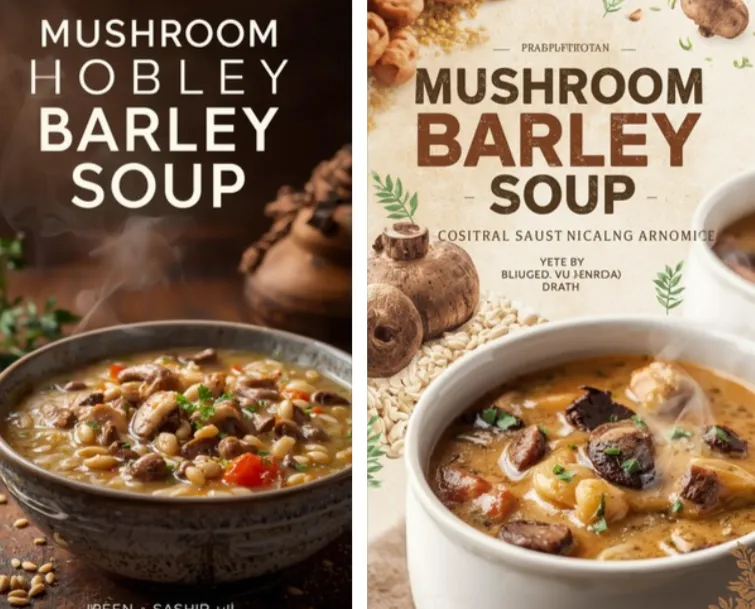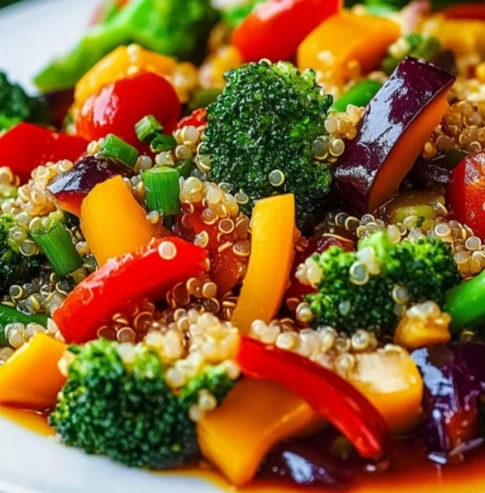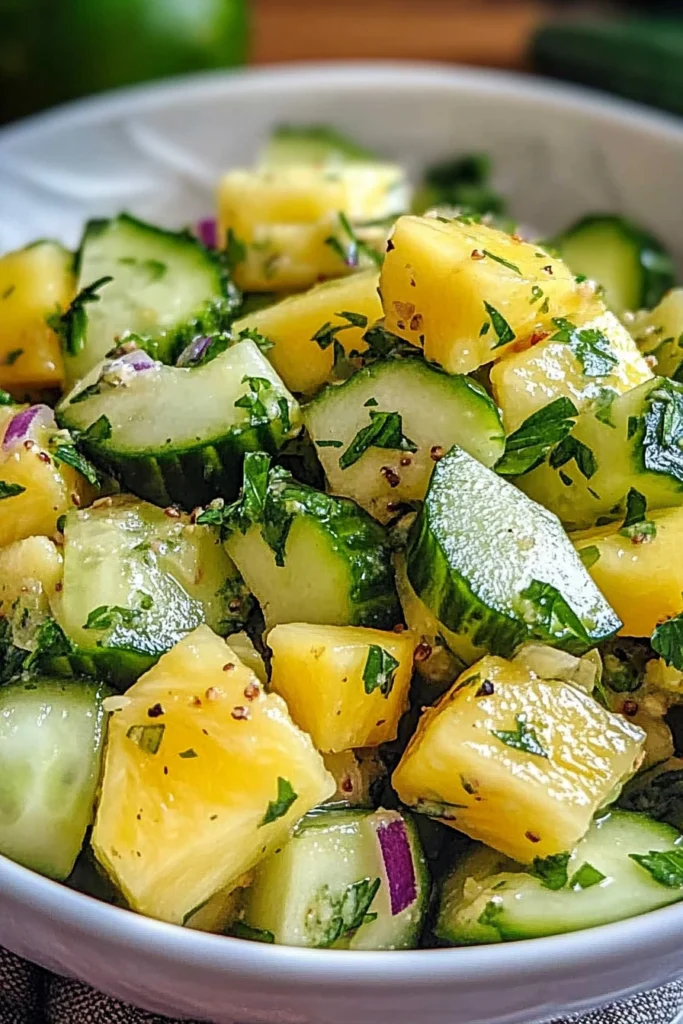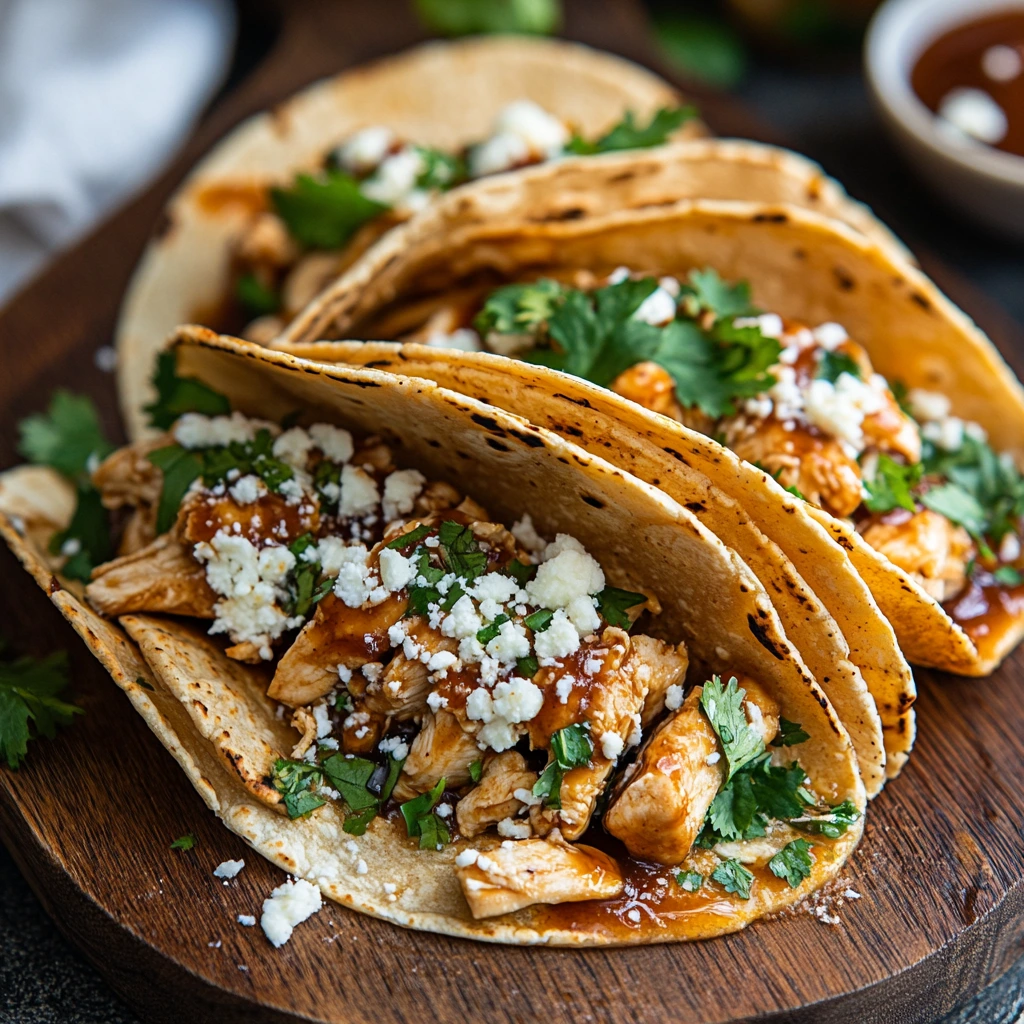Mushroom Barley Soup is a timeless classic that combines the earthy richness of mushrooms with the nutty chewiness of barley to create a dish that’s both comforting and deeply satisfying. It’s a soup that feels like a warm embrace on a cold day, nourishing the body and soothing the soul. Whether served as a main course or a starter, this soup is a perfect example of how simple, wholesome ingredients can come together to create something extraordinary. This comprehensive guide explores the history of Mushroom Barley Soup, the art of balancing flavors and textures, the best ingredients to use, step-by-step instructions, expert tips, creative variations, serving ideas, and nutritional insights.
The History of Mushroom Barley Soup
Mushroom Barley Soup has deep roots in Eastern European and Jewish cuisine, where it has long been cherished as a hearty, affordable, and nourishing meal. Barley, one of the oldest cultivated grains, has been a staple food for thousands of years, valued for its versatility and nutritional benefits. In Eastern Europe, barley was often combined with mushrooms—especially wild varieties gathered from forests—to create a filling soup that could sustain families through long winters. Over time, the dish spread across cultures, evolving into countless variations. Today, Mushroom Barley Soup remains a beloved comfort food, celebrated for its earthy flavor, wholesome ingredients, and timeless appeal.
Why Mushroom Barley Soup?
Mushroom Barley Soup is the perfect dish for anyone seeking a balance of flavor, nutrition, and comfort. The mushrooms bring a deep, umami-rich taste that mimics the heartiness of meat, while the barley adds texture and substance. The combination creates a soup that’s both satisfying and nourishing, making it ideal for vegetarians, vegans, or anyone looking for a lighter yet filling meal. It’s also incredibly versatile—serve it as a main course, a side dish, or even as part of a holiday menu.
The Science of Flavor and Texture
The magic of Mushroom Barley Soup lies in the interplay between the chewy texture of barley and the savory depth of mushrooms. Mushrooms are naturally rich in glutamates, compounds that create umami—the savory taste that enhances other flavors. When sautéed, mushrooms release moisture and caramelize, intensifying their flavor. Barley, on the other hand, absorbs the broth and aromatics, becoming tender yet pleasantly chewy. The result is a soup that’s hearty but not heavy, flavorful but not overwhelming.
Choosing the Best Ingredients
- Mushrooms: Cremini, button, or a mix of wild mushrooms (shiitake, oyster, portobello) add depth and complexity. A combination of varieties creates a more layered flavor.
- Barley: Pearl barley is most common for its quick cooking time and tender texture. Hulled barley is more nutritious but takes longer to cook.
- Broth: Vegetable or beef broth forms the base of the soup. Use homemade broth for the best flavor.
- Aromatics: Onions, garlic, carrots, and celery create a flavorful foundation.
- Herbs: Thyme, bay leaf, and parsley complement the earthy mushrooms.
- Seasonings: Salt, pepper, and a splash of soy sauce or balsamic vinegar for depth.
- Oil or Butter: Used for sautéing and adding richness.
- Optional Additions: Potatoes, leeks, or a handful of spinach for extra nutrition.
Step-by-Step Recipe: Classic Mushroom Barley Soup
Ingredients
- 2 tablespoons olive oil or butter
- 1 onion, finely chopped
- 2 carrots, diced
- 2 celery stalks, diced
- 3 cloves garlic, minced
- 1 pound mushrooms (cremini, button, or mixed), sliced
- 1 teaspoon fresh thyme leaves (or ½ teaspoon dried thyme)
- 1 bay leaf
- ¾ cup pearl barley, rinsed
- 6 cups vegetable or beef broth
- 2 tablespoons soy sauce (optional, for umami)
- Salt and freshly ground black pepper to taste
- 2 tablespoons chopped parsley for garnish
Instructions
- Prepare the Vegetables: Chop all the vegetables and clean the mushrooms with a damp cloth. Avoid washing mushrooms under running water to prevent sogginess.
- Sauté the Aromatics: In a large pot, heat the olive oil or butter over medium heat. Add the onion, carrots, and celery. Cook for 5-7 minutes until softened. Add the garlic and cook for another minute until fragrant.
- Cook the Mushrooms: Add the mushrooms and thyme. Cook for 10-12 minutes, stirring occasionally, until the mushrooms release their moisture and turn golden brown.
- Add the Barley and Broth: Stir in the barley, bay leaf, and broth. Bring to a boil, then reduce the heat to low and simmer for 45-50 minutes, or until the barley is tender.
- Season the Soup: Add soy sauce (if using), salt, and pepper. Adjust seasoning to taste. Remove the bay leaf before serving.
- Serve: Ladle into bowls and garnish with chopped parsley. Serve with crusty bread or a green salad.
Variations and Creative Twists
Vegan Mushroom Barley Soup
Use olive oil and vegetable broth, and skip any animal-based ingredients. Add a splash of soy sauce or miso paste for extra umami.
Wild Mushroom Barley Soup
Use a mix of wild mushrooms like porcini, chanterelles, and morels for a gourmet version.
Mushroom Barley Soup with Beef
Add chunks of beef or short ribs for a traditional Eastern European variation.
Mushroom Barley Soup with Leeks
Replace onions with leeks for a milder, sweeter flavor.
Mushroom Barley Soup with Spinach
Add fresh spinach at the end of cooking for color and nutrition.
Mushroom Barley Soup with Potatoes
Add diced potatoes for extra heartiness.
Creamy Mushroom Barley Soup
Stir in a splash of cream or coconut milk for a richer texture.
Spicy Mushroom Barley Soup
Add chili flakes or a dash of hot sauce for a warming kick.
Tips for Perfect Mushroom Barley Soup
- Use a Variety of Mushrooms: Combining different types creates a more complex flavor.
- Sauté the Mushrooms Thoroughly: This prevents excess moisture and intensifies flavor.
- Rinse the Barley: Removes excess starch and prevents the soup from becoming too thick.
- Simmer Gently: Slow cooking allows the flavors to meld beautifully.
- Add Salt at the End: Barley absorbs salt during cooking, so season after it’s tender.
- Make Ahead: The soup tastes even better the next day as the flavors develop.
Serving Suggestions
Mushroom Barley Soup is incredibly versatile and can be served in many ways:
- As a Main Course: Serve with crusty bread or a side salad.
- As a Starter: Serve in small bowls before a main dish.
- As a Side Dish: Pair with roasted meats or vegetables.
- As a Comfort Meal: Enjoy on its own with a sprinkle of Parmesan or a drizzle of olive oil.
For an elegant presentation, garnish with fresh herbs, a swirl of cream, or sautéed mushroom slices.
Pairing Ideas
- Wine: A light red wine like Pinot Noir or a dry white like Chardonnay complements the earthy mushrooms.
- Beer: A brown ale or porter enhances the umami flavors.
- Non-Alcoholic: Herbal tea or sparkling water with lemon.
The Nutritional Benefits of Mushrooms and Barley
Mushrooms and barley are both nutrient-dense ingredients that make this soup as healthy as it is delicious.
- Mushrooms: Low in calories but rich in B vitamins, selenium, and antioxidants. They support immune health and provide umami flavor without added fat.
- Barley: High in fiber, protein, and essential minerals like magnesium and iron. It promotes digestion and helps maintain steady energy levels.
Together, they create a dish that’s hearty, wholesome, and nourishing.
Frequently Asked Questions
Can I make Mushroom Barley Soup ahead of time?
Yes, it can be made up to 3 days in advance and stored in the refrigerator.
Can I freeze Mushroom Barley Soup?
Yes, but note that barley continues to absorb liquid. Add extra broth when reheating.
Can I use other grains?
Yes, farro, quinoa, or brown rice can be used as substitutes.
Can I make it gluten-free?
Barley contains gluten, so use brown rice or quinoa for a gluten-free version.
How do I store leftovers?
Store in an airtight container in the refrigerator for up to 4 days.
Can I use dried mushrooms?
Yes, rehydrate them in warm water for 20 minutes, then use the soaking liquid as part of the broth.
Hosting with Mushroom Barley Soup
Mushroom Barley Soup is a host’s dream dish—it’s easy to prepare, elegant to serve, and universally loved. It can be made ahead, reheated gently, and served in individual bowls or cups. For large gatherings, serve it as part of a soup and salad course or as a comforting starter for a multi-course meal.
Creative Additions
- Add roasted garlic for sweetness.
- Sprinkle with toasted nuts or seeds for crunch.
- Drizzle with truffle oil for luxury.
- Add a poached egg on top for richness.
- Garnish with microgreens or edible flowers for elegance.
Nutritional Information (per serving, 1 cup)
- Calories: 250-300
- Protein: 8 g
- Fat: 8 g
- Carbohydrates: 40 g
- Fiber: 6 g
- Sodium: 400 mg
The Appeal of Mushroom Barley Soup
What makes Mushroom Barley Soup so irresistible is its perfect balance of flavors and textures. The earthy mushrooms, nutty barley, and aromatic herbs create a combination that’s both comforting and refined. It’s rich enough to satisfy yet light enough to enjoy any time of day. Its versatility and wholesome ingredients make it a staple for both casual dinners and formal events.
The Art of Cooking Barley
Cooking barley properly is key to achieving the perfect texture. Rinse it before cooking to remove excess starch. Simmer gently in broth until tender but still chewy. Avoid overcooking, as barley can become mushy. The result should be grains that are plump, tender, and slightly nutty.
Conclusion
Mushroom Barley Soup is more than just a soup—it’s a celebration of flavor, texture, and nourishment. With its earthy mushrooms, chewy barley, and aromatic herbs, it embodies the essence of comfort food with a touch of elegance. Whether served at a family dinner, a holiday feast, or a quiet lunch, it brings warmth and satisfaction to any table. The combination of simple ingredients, thoughtful preparation, and creative presentation transforms this humble recipe into something truly extraordinary. With the tips, variations, and techniques shared in this guide, you can confidently create Mushroom Barley Soup that’s perfectly balanced, beautifully presented, and utterly delicious. This timeless dish proves that when fresh ingredients are treated with care, they can create flavors that are both comforting and unforgettable.







